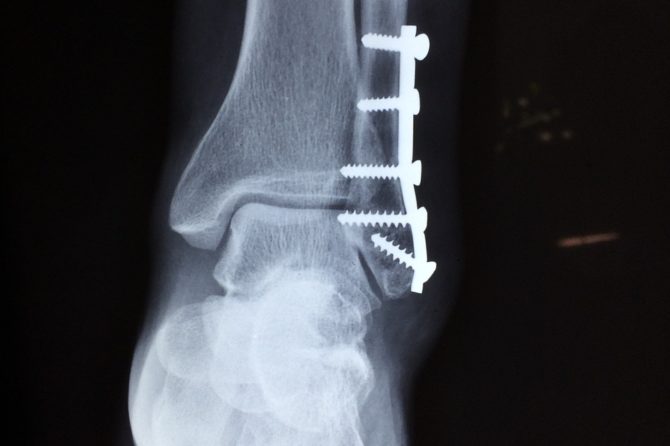
The Different Types of Broken Bones
Without the skeletal system, we would all be crawling around on the ground like an octopus out of the water. It’s good, therefore, that humans developed bones. In fact, the foot developed more bones than any other part of the body. Each foot has 26 bones, which is pretty awesome, but it’s also 52 different places injury can occur.
Bruising
Your bones are strong and can take a lot of force before succumbing to injury, but problems like a bone bruise can still cause big pain. Bruises sound minor compared to breaks, but a physically traumatic event still needed to occur to bruise a bone. The bone itself does not swell or discolor, but the sudden force causes micro-tissue tearing around the bone, and fluid and blood build up in that area. You will have swelling, tenderness, discoloration, stiffness, and pain. To diagnose a bone bruise, your podiatrist will examine the foot and ask about the injury event. Bone bruises do not show on x-rays, but your podiatrist may still take x-rays to rule out a fracture.
Stress Fracture
Stress fractures are a type of repetitive use injury common in athletes and runners. With this type of fracture, the bone has cracked but not split completely apart. Stress fractures most often develop when people change the intensity of their workouts or the surface they are working out on. Running on a treadmill in the winter then switching to pavement in the summer puts excess force on bones, causing these hairline fractures. If you have weakened bones, you could develop a stress fracture just doing everyday activities. Stress fractures will show up on x-rays and can be treated with RICE–rest, ice, compression, and elevation.
Acute Fracture
An acute fracture occurs in an instant from a traumatic event to the foot and breaks the bone apart. These fractures can range from simple breaks to gory compound fractures. Simple fractures, where the bones remain aligned, can be protected with a cast while they heal naturally.
Spiral fractures occur when the bone is twisted, causing the break to spiral around the bone. These may remain aligned and heal with prolonged immobilization, or they may require setting of the bones manually if they have been displaced.
Compound fractures occur when broken pieces of bone pierce the skin and extrude. These are the most severe and dangerous of all fractures as it leaves the patient oven to deep bone infections. Compound fractures require surgical repair, sometimes with the use of pins or rods to hold the bone together.
All acute fractures require a minimum healing time of 4-6 weeks and will be followed with physical therapy to strengthen muscles that were unused during the immobilization time.
Crush Injuries
Bones can also be crushed and shattered which can be very serious and requires major surgery. A comminuted fracture occurs when the bone breaks into three or more pieces. These fragments will need to be put back together and secured with pins, wires, screws, and plates. The goal is to help the bone heal back into its natural position. Some bones may be too injured to pin back together. In these cases, a substitute bone may be used. One option is to use a bone graft from your own body, usually taken from the hip or leg. Other options include donated cadaver bones and synthetic bones created in a lab or even with a 3D printer.
No matter what type of bone injury has occurred, you will need to see your podiatrist. From a bone bruise to a bone replacement, the foot and ankle surgeons at the FAAWC are the best at diagnosing and treating your bone injury. If you have pain in your foot or ankle and suspect a fracture, call us today!
